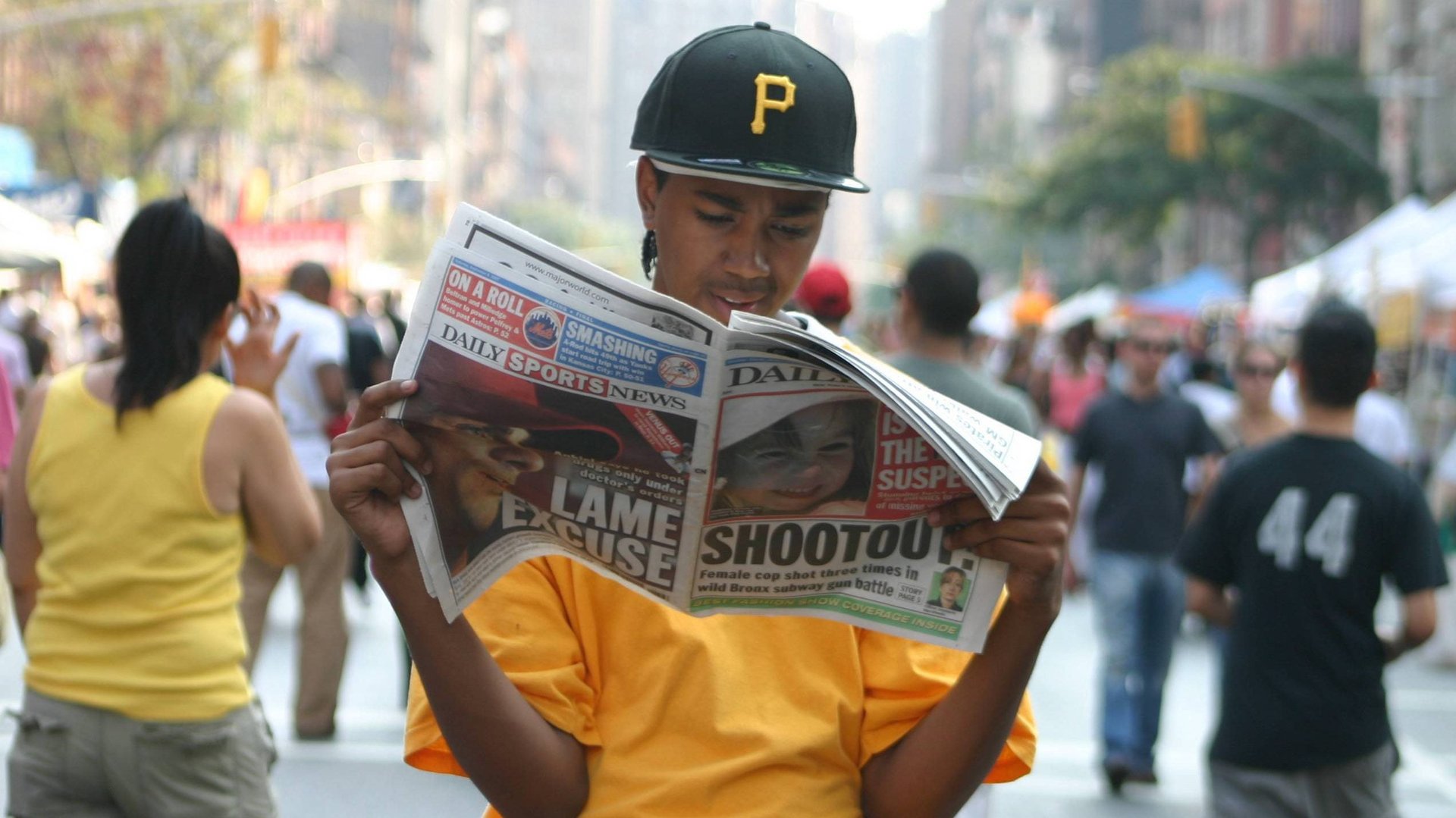Young Americans don’t trust any single news report on its own—and they think everything is biased
Young people in the US are generally skeptical of the news they consume, so they turn to multiple news sources to make their own judgements on the information, new research shows.


Young people in the US are generally skeptical of the news they consume, so they turn to multiple news sources to make their own judgements on the information, new research shows.
The Knight Foundation commissioned six focus groups that were conducted by the Data & Society Research Institute last summer to understand how people between the ages of 14 and 24 interacted with news. In all, 52 teens and young adults were interviewed in the US cities of Philadelphia, Chicago, and Charlotte. The researchers urged caution due to the very small sample size, but there are a few takeaways about attitudes toward news, which itself was defined in an interesting way by the participants—taken broadly to mean anything from a status update from a friend on Facebook to a cable-TV news report.
For one, the researchers found that young people tended to encounter news by accident, while perusing platforms like Facebook, Twitter, Instagram, and apps like Apple News, rather than by seeking it out. And that they rarely took the information at face value, usually because they perceived biases, inaccuracies, or, on social media, were unsure of the original reporting source.
This ties into a broader nationwide trend—trust in the US mainstream media sank to a new low last year, as Quartz has previously reported.
“News doesn’t have to give even accurate information on a situation,” one 23-year-old woman said in the Knight Foundation report. “It just has to be current and, like, an interest in society right now…. It’s always biased in some way or another.”
Another young woman said, “Even if it’s factual, it may be sort of tainted.”
This overarching skepticism drove many of the young people interviewed to use numerous news sources to corroborate or clarify news reports that interested them. They’d come across a news report on Facebook and then, as an example, turn to a TV news network like CNN or a platform like Reddit, which aggregates content from various sources, to verify the information.
Because the young people interviewed largely believed that all individuals have their own biases, they tended to place more credence on reports from news outlets or reporters that were more open about their biases. Then, at least, they knew what viewpoint to expect. In general, the participants considered outlets that were outside of the mainstream to be more transparent, but some also included major cable-TV news networks like Fox News and MSNBC in this mix.
“Fox leans toward more the red side,” said a 23-year-old interviewed. “CNN cares more about necessarily being the first. MSNBC cares more leaning toward the left. Everyone already has their biases. As long as you’re really aware of them, you can make a better opinion about something.”
Some consulted news organizations from across the political spectrums, or international sources like al-Jazeera that were more detached from US perspectives, so they could form their own opinions. And they were more likely to consult multiple news sources when the topic was tied to politics rather than say, celebrity gossip—or when it mattered to them personally.
“When Prince passed away,” said one 22-year-old participant, “when I’d seen that on Instagram, I was like, ‘It’s not true.’ But when I’d seen it on CNN, I was like, ‘Prince is dead.’ Same thing with Muhammad Ali.”
This is in line with 2016 research by the The Associated Press-NORC Center for Public Affairs Research that showed a majority of US teens said they discussed how to vet the credibility of information they find online, the value of evaluating evidence that backs up opinions, and how to find different viewpoints online, in school.
Overall, the Knight Foundation report showed a rather healthy approach to news at a time when media literacy in the US has been called into question. But it’s unclear how helpful the participants’ methods were at verifying information.
“It really is an open question as to how effective it is in daily life,” lead author Mary Madden, at Data & Society, told Quartz. “It is possible that they have a false sense of confidence in some cases in their ability to assess these stories,” she said of the participants.
Other nationwide studies have shown that Americans who follow news links online have trouble distinguishing between the social platforms where they encounter news and the outlets that report it, and that most students can’t tell the difference between ad-like “sponsored content” and real news online.
Image by Elvert Barnes on Flickr, licensed under CC-BY-SA-2.0.